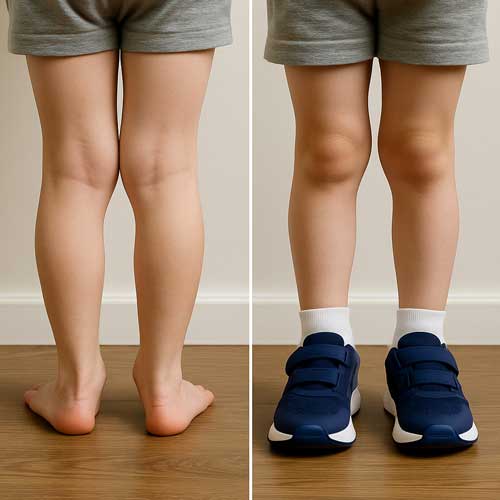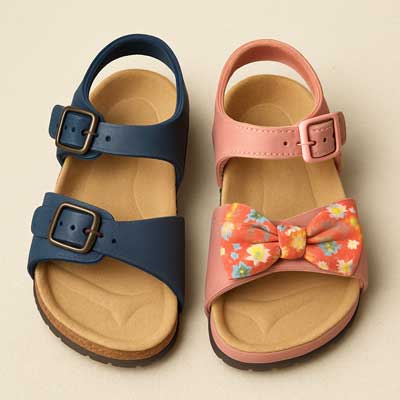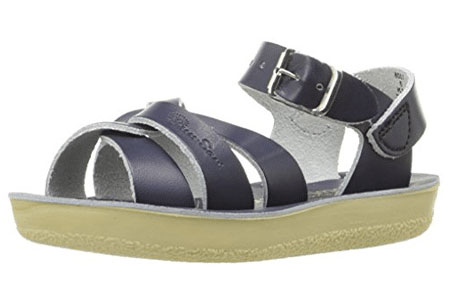Supportive Sandals for Kids – Ideal for Children with Flat Feet, Low Muscle Tone, or Intoeing
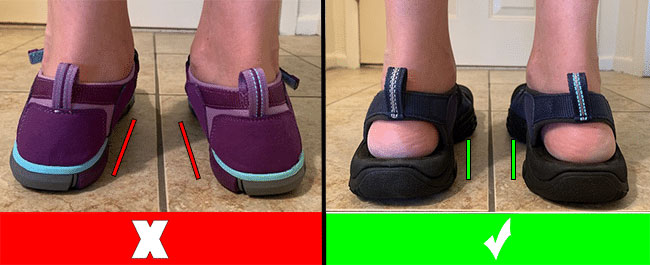
Does your child have a foot condition like flat feet, low muscle tone, intoeing, or knock knees, and your medical professional recommended supportive sandals for the summer? As a dedicated children’s shoe fitter, I know just how important the right footwear is for healthy foot development. The good news is that there are several supportive sandals for kids—not necessarily orthopedic—that offer a stable base, proper alignment, and enhanced stability. In this guide, I’ll share my top summer sandal recommendations that can help improve your child’s foot posture, balance, and overall comfort.
Should Kids with Foot Conditions Wear Sandals in Summer?
As long as the sandals offer proper support and match your child’s foot shape, they can be comfortably worn for 4 to 5 hours a day. The key is choosing a well-fitted, supportive sandal that promotes healthy movement and protects growing feet. While it’s tempting to let your child wear any sandals, those with foot conditions should opt for supportive designs. Proper sandals can aid in treatment and prevent further issues, even during the warmer months.
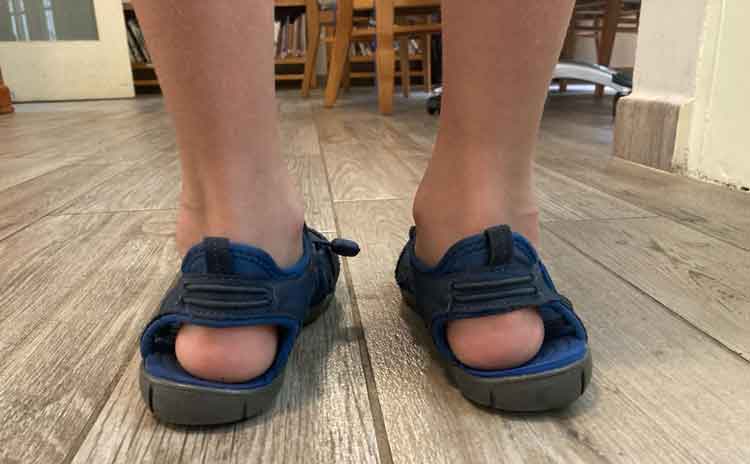
Key Features of Supportive Sandals for Kids
Feature One. Supportive Outsoles: The outsole is the part of the shoe that comes into direct contact with the ground. For children with flat feet or other conditions, a supportive outsole is crucial. Look for sandals with firm, yet flexible outsoles that provide stability and support. The firmness ensures that the foot doesn’t roll inward, while flexibility allows for natural foot movement.
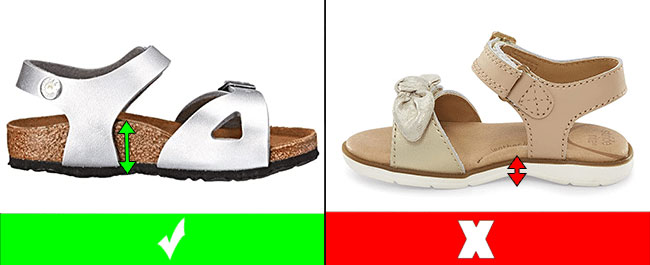
Feature Two: Targeted Cushion and Support Below the Heels. Children with low muscle tone or specific foot conditions often benefit from extra cushioning and support below the heels. This feature helps in absorbing shock and providing additional comfort, reducing strain on the feet.

Feature Three: Adjustable Straps for a Perfect Fit. Adjustable straps ensure that the sandals stay securely on the foot during active play, helping improve your child’s stability.
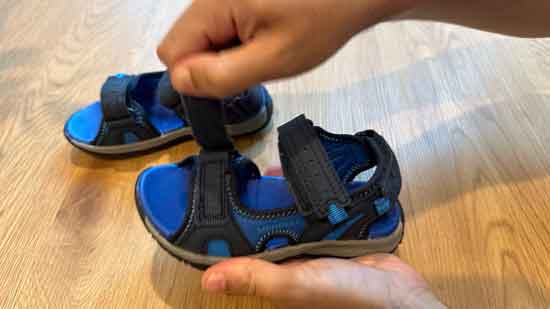
Are the Sandals I Recommend Orthopedic?
While most of the supportive sandals I recommend are everyday sandals offering extra support and structure, some of them do qualify as orthopedic. Whether your child needs orthopedic sandals depends on the severity of their foot condition and whether they’re experiencing any discomfort or pain. The right choice will ensure your child stays comfortable and supported, whether they need extra help for their feet or just a bit more stability for everyday activities.
Before and After: The Impact of Supportive Sandals
Visual evidence can be compelling. Consider the before and after image of a child wearing unsupportive sandals versus wearing supportive sandals. The difference in posture, comfort, and gait is often significant. Supportive sandals can transform a child’s ability to play and move comfortably.

What Shoe Brands Manufacture Supportive Sandals for Kids?
Some of my top shoe brands for high-quality, supportive sandals for kids include Keen, Teva, Memo, and Birkenstock. However, it’s important to note that not all styles from these brands offer the same level of support. I’ll guide you through the most supportive styles from each brand, so you can choose the best option for your child’s needs! Disclosure: We may earn commissions when you click our links and make purchases.
Supportive Sandals for Kids with Foot Conditions
Choosing the right sandal can be overwhelming, but here are my top picks for supportive kids’ sandals in 2025. Check the description below each sandal for key details such as recommended size for proper growing room, foot shape compatibility (narrow, medium, wide), and whether the sandals are orthopedic or not.
1. Psyclone by Teva
These supportive sandals for kids are a fantastic choice for children with flat feet. They feature a soft, contoured footbed and adjustable straps for a secure fit.
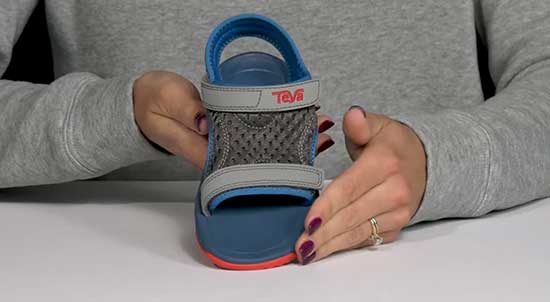
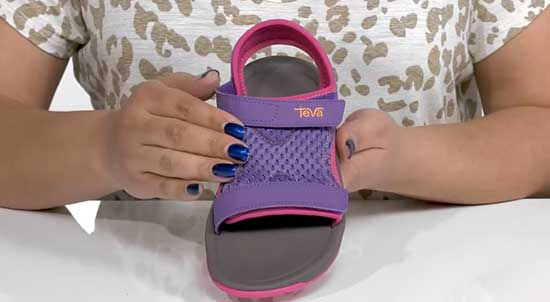
Key Features
- Order the sandal Psyclone XLT1 by Teva on Zappos or Amazon
- Fits medium, wide, and extra wide feet (fits high insteps)
- Eva foam footbed cushions and softly supports
- Rubber outsole for great traction
- I suggest that you get this sandal a half size larger than your child’s current foot size
2. Agnes by Memo
These orthopedic sandals for kids offer orthopedic support with their anatomically shaped footbed, designed specifically for children with flat feet. The sandal provides excellent heel support.
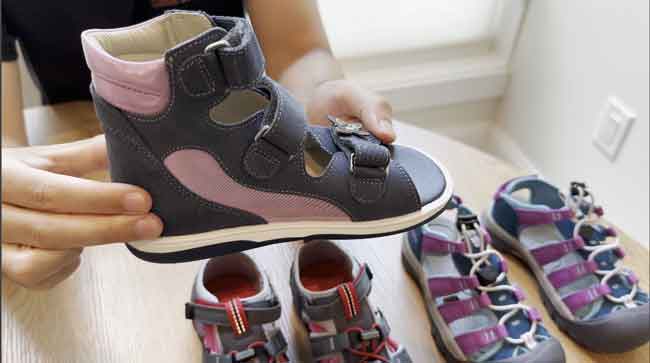
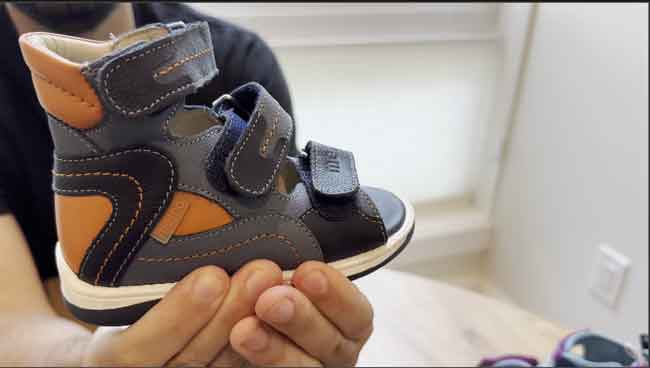
Key Features
- Order the sandal Michael Corrective Orthopedic by Memo on Amazon
- Fits medium and wide feet (fits high insteps)
- 100% leather made
- Ability to adjust the Hook and Loop strap length to the different foot width
- I suggest that you get this sandal a whole size larger than your child’s current foot size
3. Seaturtle by Kamik
These open-toe sandals provide a cushioned footbed and adjustable straps. Their lightweight and flexible design makes it ideal for active children, while the durable outsole ensures long-lasting wear.
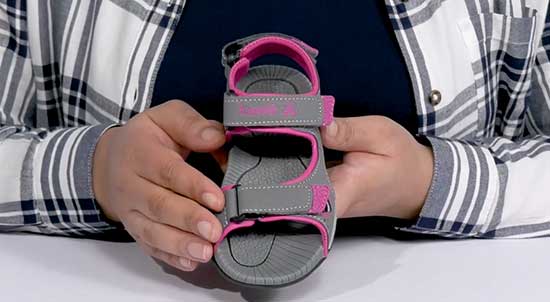
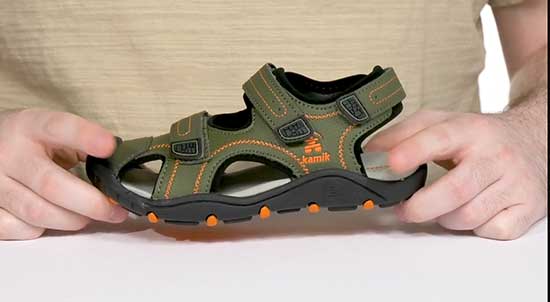
Key Features
- Order the sandal Wander by Kamik on Amazon or Zappos
- Fits medium and wide feet (fits high insteps)
- Triple velcro straps for easy on and off
- Quick drying moisture wicking lining
- Vegan-friendly
- I suggest that you get this sandal a whole size larger than your child’s current foot size
4. Mogami by Birkenstock
Birkenstock is known for its exceptional arch support, and the Mogami sandal is no exception. It features a contoured cork footbed that provides natural arch support, making it one of the best sandals for kids with flat feet.
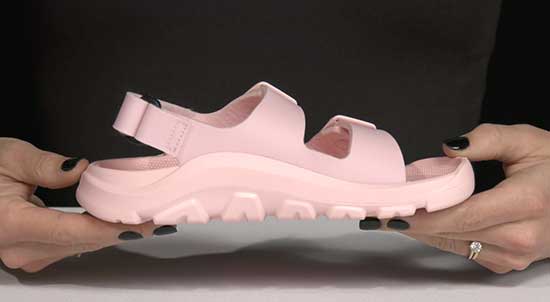
Key Features
- Order the sandal style Adventurous Light-Weight by Dream Pairs on Amazon or Zappos
- Fits medium and wide feet
- Triple hook-and-loop closure system for easy on and off
- Excellent grip
- Contoured PU footbed
- I suggest that you get this sandal a whole size larger than your child’s current foot size
5. Adventurous Light-Weight by Dream Pairs
The open design and cushioned insole provide maximum comfort, allowing for all-day wear without discomfort. Parents praise these sandals for their affordability and durability, making them a practical choice for kids with flat feet.

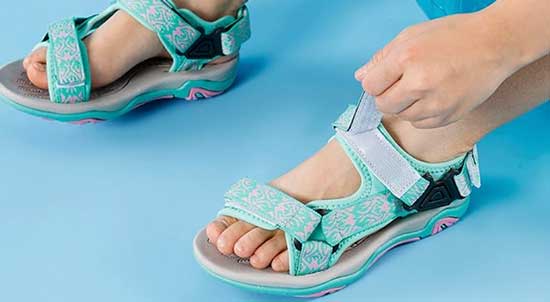
Key Features
- Order the sandal Adventurous Light-Weight by Dream Pairs on Amazon
- Fits medium, wide, and extra wide feet
- Triple hook-and-loop closure system for easy on and off
- Excellent grip
- Lightweight MD footbed is cushioned for all-day comfort
- I suggest that you get this sandal a whole size larger than your child’s current foot size
6. Newport by Keen
These Keen sandals with arch support provide a supportive footbeds and adjustable straps. Its durable construction and reliable traction make it suitable for various activities, from hiking to beach outings. This is one of my go-to sandals for kids with flat feet.
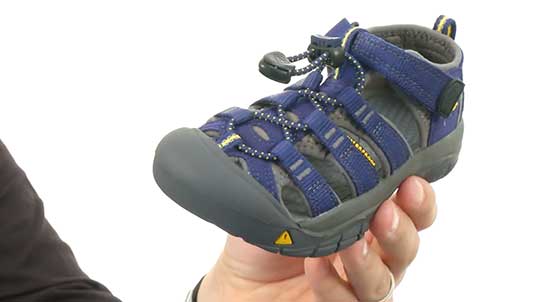
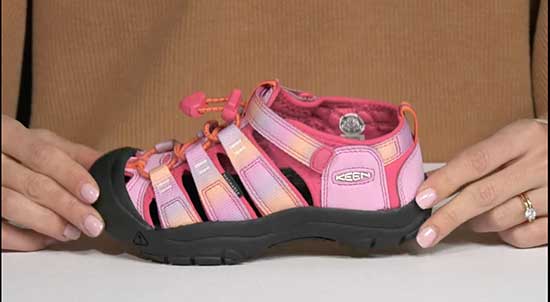
Key Features
- Order the sandal Newport H2 by Keen on Zappos or Amazon
- Fits medium and wide feet
- This internal support mechanism is anatomically engineered to provide excellent arch support
- Machine washable
- I suggest that you get this sandal a half size larger than your child’s current foot size
7. Hurricane by Teva
These open toe sandals with arch support feature a lightweight, water-friendly design with an adjustable fit. Its contoured footbed provides excellent arch support, making it a great choice for children with flat feet or other foot conditions.
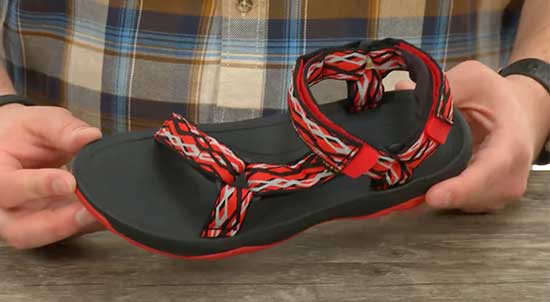
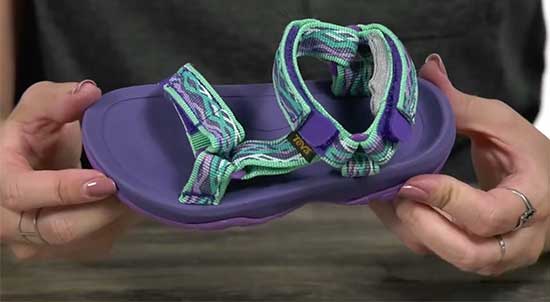
Key Features
- Order the sandal Newport H2 by Keen on Zappos or Amazon
- Fits medium and wide feet
- This internal support mechanism is anatomically engineered to provide excellent arch support
- Machine washable
- I suggest that you get this sandal a half size larger than your child’s current foot size
8. Lucky Brand
This supportive sandal provides a trendy and functional design, ensuring your child won’t have to compromise on style for comfort.
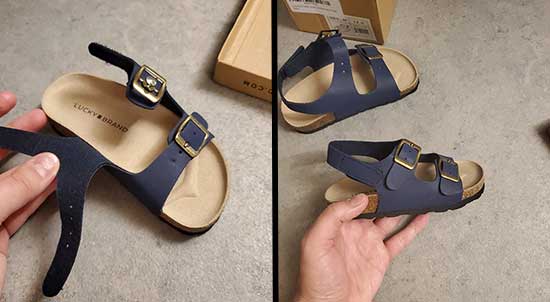
Key Features
- Order the sandal Lucky Brand on Amazon
- Fits medium and wide feet (fits high insteps)
- Supportive footbed
- Adjustable buckles at the front and velcro strap at the back for easy on and off
- I suggest that you get this sandal a half size larger than your child’s current foot size
9. Haiti Sandal by Geox
Geox’s Haiti Sandal combines style with functionality, featuring a breathable design and cushioned footbed to support children with flat feet or other foot conditions.
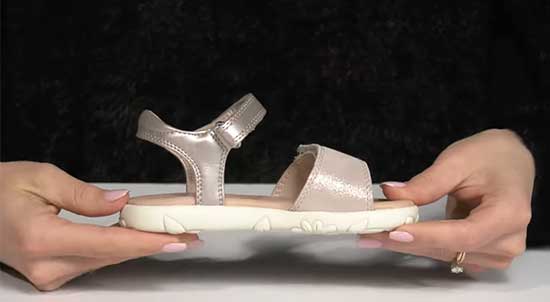
Key Features
- Order the sandal Haiti by Geox on Amazon
- Fits medium and wide feet
- I suggest that you get this sandal a half size larger than your child’s current foot size
Be sure to secure the Velcro straps snugly—this ensures your child gets the full support and stability the sandals are designed to provide.
Contact Me for Personalized Recommendations
Every child’s foot is unique, and finding the right sandals may require personalized advice. Feel free to contact me via email for specific shoe recommendations tailored to your child’s unique foot condition and shape. Personalized guidance can make all the difference in selecting the perfect pair of sandals.
Are the Sandals I Recommend Extra Heavy and Stiff?
The sandals I recommend strike the perfect balance—they’re supportive without being bulky. Designed to be lightweight and flexible, they allow your child to move comfortably while still offering the stability they need. Heavy or overly stiff sandals can lead to tired feet and legs, but these styles keep your little one moving with ease all day long.
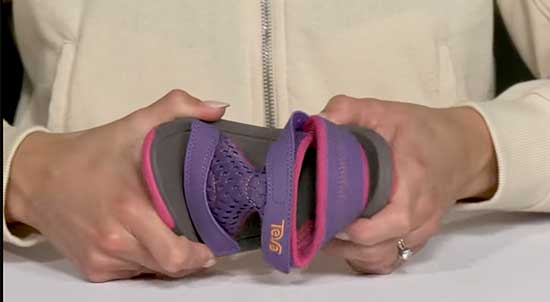
Should Your Child Wear Orthotics Inside the Sandals?
I generally don’t recommend placing orthotics or insoles inside your child’s sandals. Since most sandals don’t offer a secure, enclosed fit, the orthotics are likely to slide around, reducing their effectiveness and comfort. Plus, if the sandals get wet—which is pretty common during summer play—the orthotics could become damaged. It’s best to choose sandals that already offer built-in support tailored to your child’s needs.
Is Your Child Already Wearing a Pair of Supportive Sneakers?
While sandals are great for summer, it’s essential to have supportive sneakers for year-round wear. Sneakers with good arch support and cushioning can complement the benefits of sandals, offering continuous support and comfort. These shoes are especially important for school and sports activities, providing the necessary protection and support for growing feet.
I’m here to answer any questions and guide you in making the best choice for your child’s footwear needs. Whether you need advice on sizing, style, or specific features, I’m available to provide expert guidance. My goal is to ensure that your child’s feet are well-supported and comfortable.

